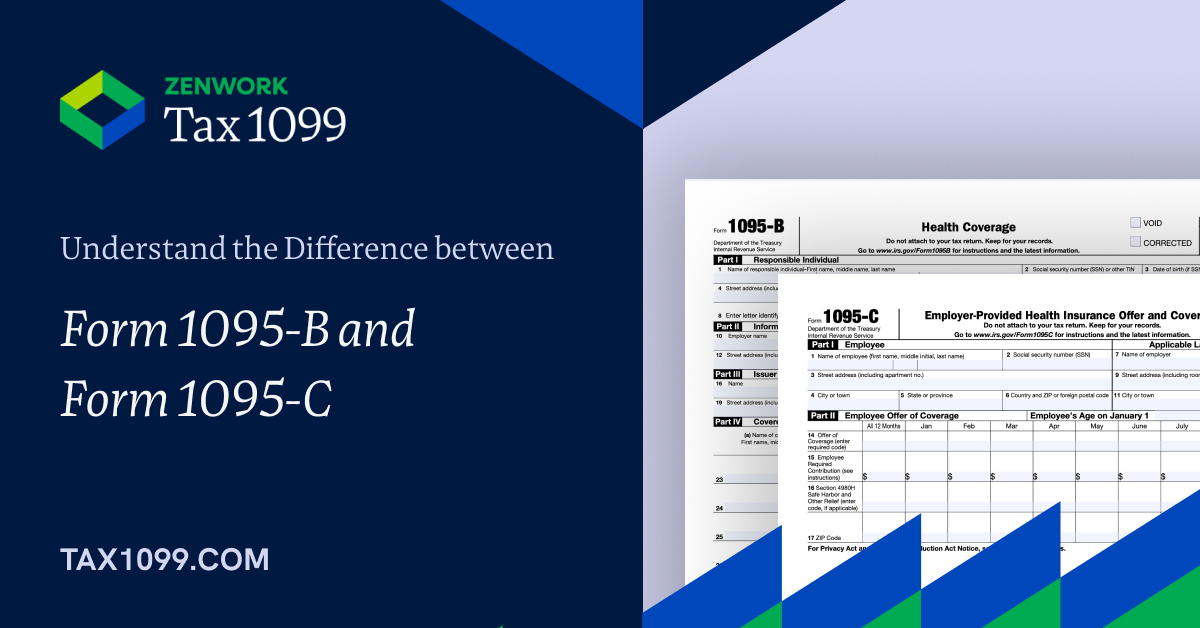Tax season arrives with a stack of important documents. Understanding the differences between 1095-B and 1095-C forms is significant to file taxes correctly. Both forms connect to health insurance coverage under the Affordable Care Act, yet they serve different purposes and impact separate groups of taxpayers.
Form 1095-B documents minimum essential coverage if you have health insurance outside the Marketplace. Form 1095-C applies specifically to companies with 50 or more full-time employees. These mandatory documents must reach eligible individuals by January’s end, with an automatic extension to March 3 for 2025. Your tax return doesn’t require these forms, but they provide vital information about your healthcare coverage that belongs in your records.
This detailed piece breaks down everything about these important tax forms. You’ll learn which forms match your situation and how to handle them during tax season effectively.
Key Differences: 1095-B vs 1095-C
When preparing your tax documents, it’s important to know whether you need to file Form 1095-B or Form 1095-C, as each form serves a different purpose in reporting health coverage information.
Form 1095-B vs 1095-C?
The main difference between these health coverage forms comes down to their issuers and purposes.
Form 1095-B is filled by health insurance providers, government agencies like Medicare, and small self-insured employers with fewer than 50 full-time employees.
Form 1095-C is filled by Applicable Large Employers (ALEs) that have 50 or more full-time employees.
Information included on each form:
Each form has its own specific information. Form 1095-B has:
- Subscriber and dependent coverage details
- Coverage period information
- Type of coverage provided
- Provider information
Form 1095-C has three main sections:
- Employee and employer information
- Coverage offers and affordability details
- Enrollment data for self-insured plans.
The form shows the employee’s share of monthly premiums for lowest-cost self-only coverage and tracks enrollment months.
Who issues each ACA form and why?
Health insurance companies outside the Marketplace, government programs like Medicare or CHIP, and some small employers use Form 1095-B to verify minimum essential coverage. ALEs must give Form 1095-C to document their health insurance offerings and show the enrollment status of their full-time employees.
Coverage and reporting requirements?
Form 1095-B verifies minimum essential coverage if you have dependents. Small employers who manage self-insured group health plans use Forms 1094-B and 1095-B for their covered individuals.
Form 1095-C must be filed by ALEs, regardless of whether they offer self-insured or fully insured health plans. It is used to report details of the coverage offered to employees, including whether it meets the minimum essential coverage (MEC) and affordability standards for all 12 months of the calendar year.
Note:
- MEC refers to the type of health insurance coverage an individual needs to have to meet the individual responsibility requirement under the Affordable Care Act (ACA). It includes employer-sponsored coverage, government programs, and individual market plans.
- For employer-sponsored health coverage to be considered affordable under the ACA, it must meet certain Affordability standards. Eg: The employee’s share of the premium for the lowest-cost self-only coverage that provides minimum value cannot exceed a certain percentage of their household income. For 2025, this percentage is 9.83%.
ACA Forms Filing Deadlines
The filing deadlines for Forms 1095-B and 1095-C are important to ensure compliance with IRS requirements. Here are the key dates:
Form |
To Employees |
IRS (Paper Filing) |
To IRS (Electronic Filing) |
|---|---|---|---|
| 1095-B | January 31st | February 28th | March 31st |
| 1095-C | January 31st | February 28th | March 31st |
File IRS Form 1095-B/C with Tax1099
Looking for an efficient way to file 1095-B online? IRS-authorized Tax1099 allows you to eFile your 1095-B/C with security and ease, all online. It’s a state and federal compliant platform designed to help businesses of all sizes and types.
Step 1: Select the ACA Form from Tax1099’s Form Directory
Step 2: Enter the information and review
Step 3: E-File 1095-B/C to the IRS. Alternatively, you can schedule your e-files too with Tax1099.
API integration is also available for bulk filings!
Turn ACA compliance chaos into Zen-like calm with Zenwork Tax1099.
Have something to add to this? Comment below.



